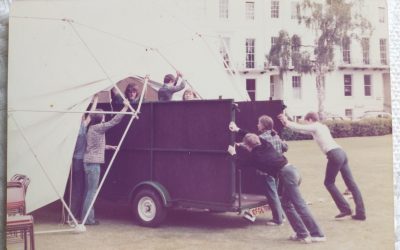It’s been on my mind recently that I never properly learned Beethoven’s final piano sonata. I’ve been performing and lecturing about the two penultimate sonatas, opus 109 and 110, but when someone asked if I’d like to do opus 111 as well, I had to admit that it isn’t in my concert repertoire.
Why not? Well, I went through a longish period when I felt uncomfortable with a certain side of Beethoven’s music: the gruff, brusque, defiant side. I didn’t really understand it and I tended to leave those pieces alone. The Beethoven I felt at home with was, for example, his Fourth Piano Concerto, which I’m practising for a concert in April (note to self: Eek! It’s April tomorrow.) But I realise it’s ridiculous not to play Beethoven’s last piano sonata, so from time to time I’ve been opening the volume at that sonata and looking at it out of the corner of my eye.
Last week, out of the blue, a friend in the US kindly sent me a DVD about the American pianist Seymour Bernstein. I learned that he had voluntarily given up a promising concert career in mid-life because of nerves and misgivings about the rightness of a solo concert career as a way of life. Since then, he has become a teacher/composer/educator with a high reputation for ‘holistic thinking’. He came to public attention when he made friends with the actor Ethan Hawke, who was inspired by a chance conversation they had about nerves and performing. Ethan Hawke made a lovely film about his mentor called ‘Seymour: an Introduction‘.
I watched the DVD last night. In it, Seymour Bernstein uses the opening of Beethoven’s final piano sonata to illustrate Beethoven at his most ‘macho’. He played the opening bars with a Beethovenesque growl. It was a strange coincidence that someone should send me a DVD with this scene in it at the very moment when I was wondering whether I had the energy to grapple with the piece myself. But in fact it’s prompted me to begin. And I look forward to learning the second and final movement, the wonderful 20-minute ‘Arietta’ with its variations.




It’s funny but I’ve just been thinking about E.M. Forster’s book, ‘A Room With a View,’ and I began wondering why Forster chose for Lucy to play the opus 111 sonata when she is staying at the Pension Bertolini. Surely such a young person would not be able to (or indeed have the desire to learn!) the long finale. I ask myself, did she actually just play the first movement? Or does she really play the complete sonata? In the movie it’s changed to the Waldstein Sonata, which seems more likely, and yet a part of me hopes that she really did try her hand at the magnificent last sonata.
Yours sincerely,
James
EM Forster obsessed
James, I agree that opus 111 is a strange choice on Forster’s part, especially for a young woman who (presumably) had not had the opportunity to play the piano much during her travels to Italy. Perhaps Forster didn’t really know the Beethoven sonatas? (heretical thought!) Even the Waldstein seems quite a tall order for someone who was on holiday and hadn’t been playing the piano regularly.
Yes! Well back in 2017, have fun learning the sonata!